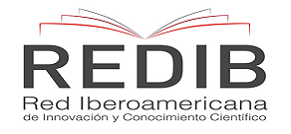Swimming training macrocycle to optimize performance in 10- and 11-year-old triathletes
Keywords:
Macrocycle, Triathlon, SwimmingAbstract
Objective: To evaluate the effectiveness of a 12-week training macrocycle specifically designed for swimming training in child triathletes.
Methods: The intervention was applied to a sample of 16 athletes (children, 10–11 years old) from the Ekilibrio Specialized Training Sports Club in Cuenca, Ecuador. A classical periodization model was used, which includes a long preparatory phase followed by a shorter competitive phase. The study adopted a quantitative, applied approach with an experimental design.
Results: After statistical analysis of the data, and obtaining a p value < 0.05, it was found that there are statistically significant differences between the results of the pretest and the posttest.
Conclusions: Consequently, it is concluded that the implemented macrocycle significantly contributed to the improvement in swimming performance of the participating child triathletes.
Downloads
References
Aschwer, H. (2006). Entrenamiento del Triatñpn. Paidotribo.
Castañeda, M.?B., Cabrera, A.?F., Navarro, Y., & de Vries, W. (2010). Procesamiento de datos y análisis estadísticos utilizando SPSS: un libro práctico para investigadores y administradores educativos. Pontifícia Universidade Católica do Rio Grande do Sul.
Dantas, E.?H.?M., Barrón, J.?C., Bispo, M.?D.?C., de Godoy, E.?S., Aquino dos Santos, C.?K., Dias Bello, M.?N., & Gastélum Cuadras, G. (2022). Criterios para identificar y evaluar modelos de periodización de entrenamiento deportivo. Retos, 45, 174–183. https://doi.org/10.47197/retos.v45i0.90837
Dantas, E. H. M., García Manso, J. M., Godoy, E. S., Sposito Araujo, C. A., & Gomes, A. C. (2010). Aplicabilidad de los modelos de periodización del entrenamiento deportivo: Una revisión sistemática. Revista Internacional de Ciencias del Deporte, 6(20), 231–241. https://doi.org/10.5232/ricyde2010.02005
Federación Mexicana de Triatlón. (2016). Entrenamiento deportivo. Ciudad de Mexico, Mexico.
Ferriz?Valero, A. (2018). Identificación de factores para el desarrollo del talento deportivo en jóvenes triatletas [Tesis doctoral, Universidad de Alicante]. Repositorio del Observatorio de la Producción Científica, Universidad de Alicante.
García Pazmiño, M. A., García Ucha, F., Arévalo García, N. A., & García Pazmmiño, S. T. (2019). Presiones deportivas y disposición óptima combativa. Retos, (35), 335–340. https://doi.org/10.47197/retos.v0i35.61911
González, A. (2018). Planificación del entrenamiento: una mirada hacia lo tradicional y contemporáneo. Lúdica Pedagógica, 1(28), 1-12.
Hernández-Sampieri, R., & Mendoza Torres, C. P. (2018). Metodologia de la Investigacion: Las rutas cuatitativas, cualitativas y mistas. Ciudad de México: Mcgraw-Hill Interamericana Editores, S.A. de C. V.
Lago Hidalgo, J. (2002). Propuesta metodológica para la mejora del rendimiento en el segmento de natación en triatlón. EFDeportes, Revista Digital 8(48), 1-12.
Manzano Moreno, J. I. (2004). Clarificación de conceptos relacionados con el entrenamiento deportivo. Revista de Investigación Educativa, 7, 55–71.
Marinho, D. A., Silva, A. J., Reis, V. M., Costa, A. M., Brito, J. P., Ferraz, R., & Marques, M. C. (2009). Cambios en la velocidad crítica y en la frecuencia crítica de brazada durante un periodo de entrenamiento en natación de 12 semanas: caso práctico. Journal of Human Sport & Exercise, 4(1), 52–61. https://doi.org/10.4100/jhse.2009.41.06
Matveev, L. (1983). Periodizacion del entrenamiento deportivo. Instituto Nacional de Educación Fisica.
Matveev, L. P. (1977). Periodización del entrenamiento deportivo. Instituto Nacional de Educación Fisica.
Paula, M., & Aguilar, E. (2022). Perception and Sports Programming in the Students of the Santa Elena Peninsula State University. Journal of Language and Linguistic Studies, 21(2), 365-379.
Pedro, V. (2024). PV sports business. Obtenido de https://www.pvsports.com.ec/
Piloña Ortiz, G. A. (2008). Guía Práctica sobre Métodos y Técnicas de Investigación Documental y de Campo. Ciudad de Guatemala, en Guatemala.
Ruiz, J. R., España Romero, V., Castro Piñero, J., Artero, E. G., Ortega, F. B., Cuenca García, M., Jiménez Pavón, D., Chillón, P., Girela Rejón, M. J., Mora, J., Gutiérrez, A., Suni, J., Sjöström, M., & Castillo, M. J. (2011). Batería ALPHA-Fitness: test de campo para la evaluación de la condición física relacionada con la salud en niños y adolescentes. Nutrición Hospitalaria, 26(6), 1246–1256. https://doi.org/10.3305/nh.2011.26.6.5611
Saavedra García, J. M. (1999). Ejemplo de planificación en nadadores junior de nivel medio. Congreso de Rendimiento Deportivo. Recuperado de https://www.cienciadeporte.com/images/congresos/caceres/Rendimiento_deportivo/entrenamiento_deportivo/17natacion.pdf
Sabino, C. (2014). El proceso de investigación (10th ed.). Editorial Episteme.
Sánchez García, A. (2015). Valoración de la resistencia aeróbica de los nadadores a través del test de la velocidad crítica de nado [Trabajo de fin de grado, Universidad de León]. Repositorio Institucional de la Universidad de León (BULERIA).
Wakayoshi, K., Ikuta, K., Yoshida, T., Udo, M., Moritani, T., Mutoh, Y., & Miyashita, M. (1992). Determination and validity of critical velocity as an index of swimming performance in the competitive swimmer. European Journal of Applied Physiology, 64(2), 153-7.
World Triathlon. (n.d.). World Triathlon. Retrieved September 3, 2025, from https://triathlon.org/
Downloads
Published
How to Cite
Issue
Section
License
Copyright and Licensing
For all articles published in Atena Journals, copyright is retained by the authors. Articles are licensed under an open access Creative Commons CC BY 4.0 license, meaning that anyone may download and read the paper for free. In addition, the article may be reused and quoted provided that the original published version is cited. These conditions allow for maximum use and exposure of the work, while ensuring that the authors receive proper credit.
Reproducing Published Material from other Publishers
It is absolutely essential that authors obtain permission to reproduce any published material (figures, schemes, tables or any extract of a text) which does not fall into the public domain, or for which they do not hold the copyright. Permission should be requested by the authors from the copyrightholder (usually the Publisher, please refer to the imprint of the individual publications to identify the copyrightholder).
Permission is required for:
- Your own works published by other Publishers and for which you did not retain copyright.
- Substantial extracts from anyones' works or a series of works.
- Use of Tables, Graphs, Charts, Schemes and Artworks if they are unaltered or slightly modified.
- Photographs for which you do not hold copyright.
Permission is not required for:
- Reconstruction of your own table with data already published elsewhere. Please notice that in this case you must cite the source of the data in the form of either "Data from..." or "Adapted from...".
- Reasonably short quotes are considered fair use and therefore do not require permission.
- Graphs, Charts, Schemes and Artworks that are completely redrawn by the authors and significantly changed beyond recognition do not require permission.
Obtaining Permission
In order to avoid unnecessary delays in the publication process, you should start obtaining permissions as early as possible. If in any doubt about the copyright, apply for permission. Atena Journals cannot publish material from other publications without permission.
The copyright holder may give you instructions on the form of acknowledgement to be followed; otherwise follow the style: "Reproduced with permission from [author], [book/journal title]; published by [publisher], [year].' at the end of the caption of the Table, Figure or Scheme.














